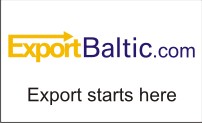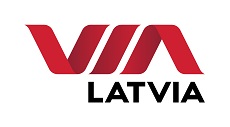Analytics, Internet, Latvia, Markets and Companies, Statistics
International Internet Magazine. Baltic States news & analytics
Wednesday, 07.01.2026, 08:07
Latvia: During two years use of social media in enterprises rose by 10.9 percentage points
 Print version
Print versionIn 2009, only 42.1% of enterprises had a website. During ten years most rapidly this indicator increased in medium-sized (by 23.8 percentage points) and small enterprises (by 21.5 percentage points), but in large enterprises growth comprises 9.7 percentage points (in 2009, already 84.4 % of large enterprises had a website). In breakdown by sectors, this trend has not changed during ten years. The largest amount of enterprises with a website are in information and communication services sector (92%) and accommodation sector (84.2%).
23.8% of enterprises with a website analyse activities of website visitors with an aim to advertise and improve customer satisfaction.
40.9% of enterprises use social media, of which 74.5% are large enterprises, 49.9% – medium-sized enterprises and 38.2% – small enterprises. In 2017, 30% of enterprises used social media, but in 2013 – only 15.4%. Compared to 2017, most rapidly use of social media increased in small enterprises (by 11.3 percentage points), in medium-sized and large enterprises – by 8.6 and 8 percentage points, respectively. Increasing number of enterprises (39.7%) are using social network in their activity, such as Facebook, Draugiem, LinkedIn, etc. Multimedia content sharing sites, such as Instagram, YouTube, Flickr, are used by 16.4% of enterprises, blogging or micro-blogging sites, such as Twitter, WordPress, – by 10.3% enterprises. The smallest amount of enterprises (3.7%) are using Wiki-based knowledge-sharing tools, such as MediaWiki, Confluence, SharePoint.

Similar as in previous years, enterprises use social media the most for promoting company image or increasing awareness of products (37.9%), for getting information on customer opinions and reviews or for providing answer on customer questions (26.4%), as well as for searching employees (23.2%). Less frequently – for involving customers in development and improvement of goods or services (16.2%), for cooperation with business partners or other organizations (14.8%) and for enhancement of views or knowledge sharing within the enterprise (12.1%).
For the first time this year enterprises were asked on ICT security3. Results of the survey show that special provisions on ICT security requirements and measures are elaborated in 41.9% of enterprises. Majority of them (25.4%) have updated documentation on ICT security measures and requirements over the last year, 12.2% – within one to two years time, but 4.2% – more than two years ago.
Mostly outsourcing service providers are responsible for implementation of ICT security measures in enterprises (in 69% of enterprises), but in 24.4% of enterprises – their own employees, but in 5.4% of enterprises – both outsourcing service providers and employees of the enterprise. Mainly small enterprises (75.6%) and medium-sized enterprises (72.9%) attract such outsourcing service, less frequently – large enterprises (44.6%).
In 2018, 9.4% of enterprises faced inaccessibility of ICT services or systems, 6.7% – data losses or damages, but 1.6% – disclosure of confidential data. 12.2 % of enterprises are insured against ICT security incidents.
ICT security control used the most (in 86.9% enterprises) is stringent password, the least (in 11.1% enterprises) – biometric methods, for example, fingerprints, voice or face recognition.
ICT
security controls used in enterprises in 2019
(% of total number of
enterprises in the respective group)
|
ICT
security control |
Total |
Of
which with the number of employees: |
||
|
10–49
(small) |
50–249
(medium-sized) |
250+
(large) |
||
|
Stringent passwords |
86.9 |
86.0 |
90.6 |
94.6 |
|
Regular software (operating system) update |
75.1 |
72.1 |
87.5 |
95.2 |
|
Identification of users and authorization using
biometric methods |
11.1 |
10.0 |
15.2 |
19.9 |
|
Encryption of data, documents and / or e-mail |
27.3 |
24.9 |
35.8 |
54.8 |
|
Data backup in other data medium (including cloud
computing4) |
60.6 |
57.2 |
73.8 |
91.4 |
|
Network access control (equipment and user access
control) |
56.2 |
52.3 |
71.1 |
89.0 |
|
VPN (virtual private network which ensures secure
data exchange using public network) |
25.9 |
21.1 |
43.0 |
77.8 |
|
Maintenance of log files for analysis after security
incidents |
22.2 |
17.7 |
37.9 |
74.4 |
|
ICT security risk assessment |
30.0 |
25.3 |
47.6 |
76.9 |
|
ICT security testing |
32.4 |
28.1 |
49.2 |
67.7 |








 «The Baltic Course» Is Sold and Stays in Business!
«The Baltic Course» Is Sold and Stays in Business!

